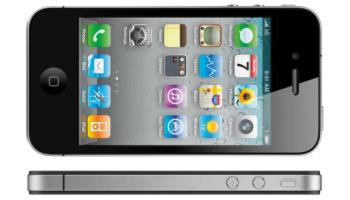

Apple has admitted there is an issue with the antenna of its newly released iPhone 4, but has blamed a faulty algorithm instead of the hardware itself. The news comes after the first of a number of lawsuits hit the company.
Apple published an open letter in which it said it was “surprised when we read reports of reception problems, and we immediately began investigating them.”
The so-called “iPhone Death Grip” happens when users hold the device in the left hand with their palm covering the lower left part of the stainless steel band that houses some of its antennas. They can either lose signal altogether, or experience a much weaker signal strength. The problem has been demonstrated in this YouTube video.
Nokia wasted little time in jumping on the bandwagon with a tongue-in-cheek guide entitled “How do you hold your Nokia?”.
And Apple has correctly identified that this is an issue that also affects other handsets. ““To start with, gripping almost any mobile phone in certain ways will reduce its reception by 1 or more bars. This is true of iPhone 4, iPhone 3GS, as well as many Droid, Nokia and RIM phones.”
Indeed, a number of videos have emerged on YouTube showing Nokia phone reception dropping when held. These include videos of a Nokia E71, Nokia 6230, and Nokia 6720.
But Apple said it was concerned that some users have reported that iPhone 4 can drop 4 or 5 bars when tightly held in a way which covers the black strip in the lower left corner of the metal band.
“This is a far bigger drop than normal, and as a result some have accused the iPhone 4 of having a faulty antenna design,” it said.
“We have discovered the cause of this dramatic drop in bars, and it is both simple and surprising,” Apple said. “Upon investigation, we were stunned to find that the formula we use to calculate how many bars of signal strength to display is totally wrong. Our formula, in many instances, mistakenly displays 2 more bars than it should for a given signal strength. For example, we sometimes display 4 bars when we should be displaying as few as 2 bars.”
Apple said that in order to fix this, it is adopting AT&T’s recently recommended formula for calculating how many bars to display for a given signal strength.
“The real signal strength remains the same, but the iPhone’s bars will report it far more accurately, providing users a much better indication of the reception they will get in a given area. We are also making bars 1, 2 and 3 a bit taller so they will be easier to see,” it added.
Apple also said that it will offer a free software update within a few weeks that incorporates the corrected formula, which will also apply to the iPhone 3GS and iPhone 3G.
Meanwhile it has emerged that Apple has been hit with several lawsuits over the issue. A putative class action lawsuit been filed in US District Court for the Northern District of California against Apple and AT&T Inc.
And another class action complaint was filed against Apple and AT&T in the US District Court for the District of Maryland.
American space agency prepares for testing of Boeing's Starliner, to ensure it has two space…
As UK and Europe develop closer military ties, European Commission says it will invest €1.3…
Zuckerberg seeks to revive Facebook's original spirit, as Meta launches Facebook Friends tab, so users…
Notable development for Meta, after appeal against 2021 WhatsApp privacy fine is backed by advisor…
First sign of shake-up under new CEO Lip-Bu Tan? Three Intel board members confirm they…
Trump's nominee for SEC Chairman, Paul Atkins, has pledged a “rational, coherent, and principled approach”…